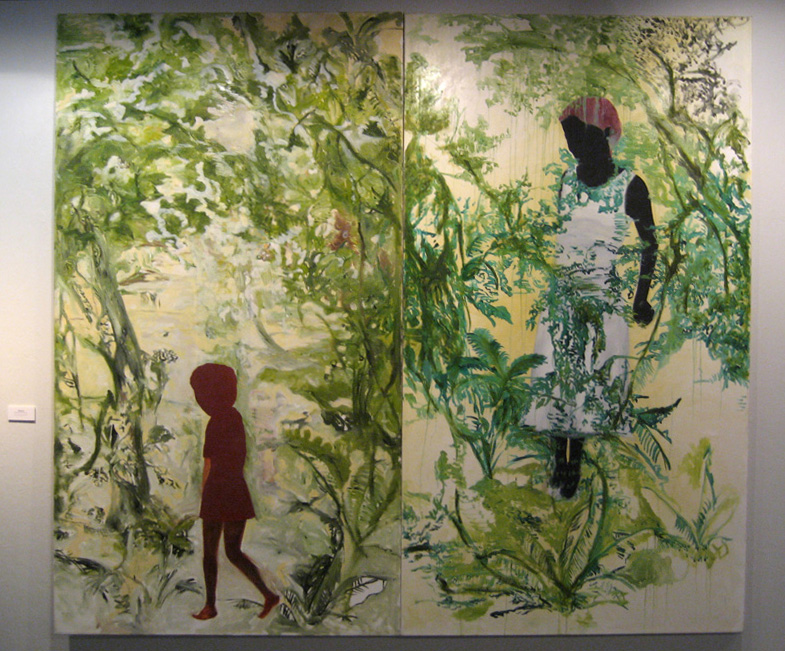Source: WTL digital photo© of canvas in "Imagining of Place" art exhibition at Santa Fe College, 2009.
Permission: Nereida García Ferraz's email to WTL March 2, 2009.
Image: "Obatalá;" oil on canvas; 46" x 84."
Comments: This is a diptych; the work you see is one work of art painted on two canvases displayed side by side. This is the first work mounted on the left (south) wall to the left of the gallery's entrance door. Since all but one of the works in this show were (are) for sale, it can be mentioned that this is the most ambitious, the largest, and the most expensive ($10,000). As defined by the Merrian-Webster online English dictionary, a diptych is "(2) a picture or series of pictures (as an altarpiece) painted or carved on two hinged tablets; (3) a work made up of two matching parts."
Obatalá: In the Yoruba religion of Africa (and in Santería), Obatalá is the the power of God or the Supreme Being. This god created human bodies, after which another Yoruba god breathed life into them. In addition, Obatalá is the owner of every person's head. When a person becomes a Yoruba priest, then he or she owns their own head. In Santería, which is a syncretic Cuban religion (Christianity and various African religions), Obatalá is identified with a Catholic persona of Mary, Our Lady of Mercy. Santería is also known as Regla de Ochá and Regla de Ifá. The liturgical language used by practitioners of Santería is Lucumí, a dialect of Yoruba.
Humanities Questions: (A) Describe this work as if it were one integrated whole. (B) Next, describe each of the separate panels or parts. (C) Third, describe the work as two separate parts of one whole. Although no hinges are to be seen, nevertheless they are suggested by the art convention that this piece is indeed a diptych. (D) How can you imagine the effect of "hinging" these two "tablets" together and operating them as if they were movable? (E) Finally, relate the notion of Obatalá to the two separate but united parts of this one large work. (Ee) What would the effect be if one of the halves were missing?

